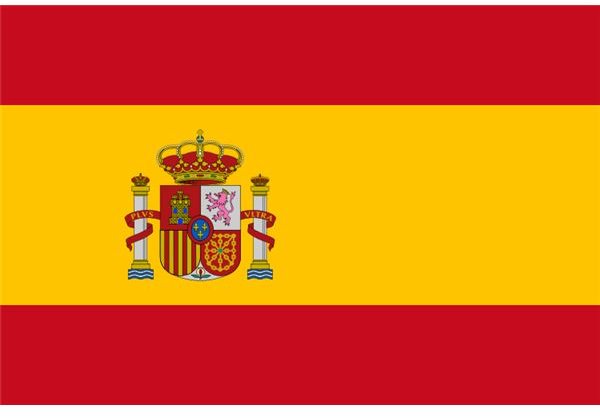Practice Your Spanish: Order a Meal at a Spanish Restaurant
One of the fun ways of learning a language is learning its food culture. The Spanish have a rich culinary tradition and eating in a
Spanish restaurant will offer you both gastronomic delight as well as the chance to practice your Spanish speaking skills. Memorize the required phrases and try them out in a restaurant. Aim for correct pronunciation, but don’t worry overly about it. So long you are polite and well-mannered, most people will be flattered you are making an effort to learn their language.
Choosing the Restaurant
The first thing to do is choose your restaurant. Try a restaurant that locals frequent rather than the ones catering to the tourists. You may have to make a reservation if it is a particularly popular place. You can do this on the phone or on the Internet. If you are phoning, you can say something like this -
“Hello. I would like to make a reservation My name is So and So. Can I reserve a table for breakfast, lunch or dinner today? We are two people. I want a table in the non-smoking area and near to the window.”
“Hola. Quiero hacer una reservación. Me llamo So and So. ¿Puedo reservar una tabla para el desayuno, el almuerzo o la cena hoy? Somos dos personas. Quiero una mesa en la área de no fumar y a lado de la ventana.”
Then you arrive at the restaurant and you tell the waiter you have a reservation in the name So and So - “Tengo una reservación en el nombre So and So.”
You address the waiter as “Camarero” or, if it is a waitress, as “Senorita”.
Looking Through the Menu
At your table, the waiter will offer you the menu – this is “la carta,” not “el menu.” You will be asked if you want something to eat - “Quieres algo a comer?” - or what you would like to eat - “Que quieres comer?” Or if you want something to drink - “Quieres algo a beber?” If you are not offered a menu or don’t find one placed already on your table, you can ask for one - “Quiero ver la carta, por favor.”
Look carefully through the menu. Spanish menus usually have different sections. There can be a Menu del Dia (Menu of the day) where, for one set price, you can have a soup, a salad, a main course, a side dish and a dessert.
There can be a Platos Principales (Main Courses) or an Especialidades de la Casa (Specialties of the House) section listing the different dishes the restaurant specializes in. This section will usually include sub-sections like Ensaladas (Salad), Sopas (Soups), Pescados (Fish), Mariscos (Seafood), Carnes (Meat), Postre (Dessert) and Vinos (Wines).
Sometimes, the menu separately lists the Entrantes (Appetizers – sausages, hams and cheeses), Primo Plato (First Course – salads and soups), the Segundo Plato (Second Course – stews, roasts, chops or grilled food), Postre (Dessert) and Vinos (Wines).
Placing Your Order
Once you’re done looking at the menu, the waiter will ask if you are ready to order. He will say, “¿Está usted listo para ordenar?” Or you can say you want to place your order now, which is, “Quiero pedir una cena ahora.” To tell the waiter what you want, you say “Quiero la ensalada” (I want the salad). Whatever you want to order, just add Quiero before it.
If you are not sure what to order you can ask the waiter what he would recommend - “¿Qué usted recomienda?” You can inquire about the ingredients - “¿Qué ingredients tiene?” - or if the item is hot, cold or spicy – “¿Es caliente, frío o picante?” If you are a vegetarian, you can say you want your food without meat or fish. This is “Sin la carne o los pescados”. If the salad (or any other item) you want is not available, the waiter will tell you, “Lamento, no tenemos la ensalada.” If you are having too much of a communication problem with the waiter about what to order, you can simply look around to see what the other patrons are eating and, discreetly pointing, convey you would like the same.
You can order a drink before your meal - “Quiero el vino blanco (white wine), el vino rosado (claret wine), el vino tinto (red wine), una soda (soft drink) o un vaso de agua (a glass of water)” - and you will probably be offered bread and olive oil while you are waiting for your meal to arrive. When your meal finally arrives, the waiter might say something like “Buen provecho”. This is the equivalent of the French ‘Bon Appetit”.
Paying the Bill
If you like the meal, be sure to say, “El alimento es delicioso!” (The food is delicious). Chefs all over the world like to be complimented. Later, you can ask for the bill by saying, “Camarero, quiero la cuenta, por favor.” If service isn’t included in the bill, leave a tip or “la propina” for your waiter.
Please see the following Spanish language articles here at Bright Hub Education
Spanish Pronouns: A Few Basics
Teaching Spanish - Designing a House Activity
Learning Spanish - Cooking in Spanish
Learning Spanish - Vocabulary for Painting in Spanish
